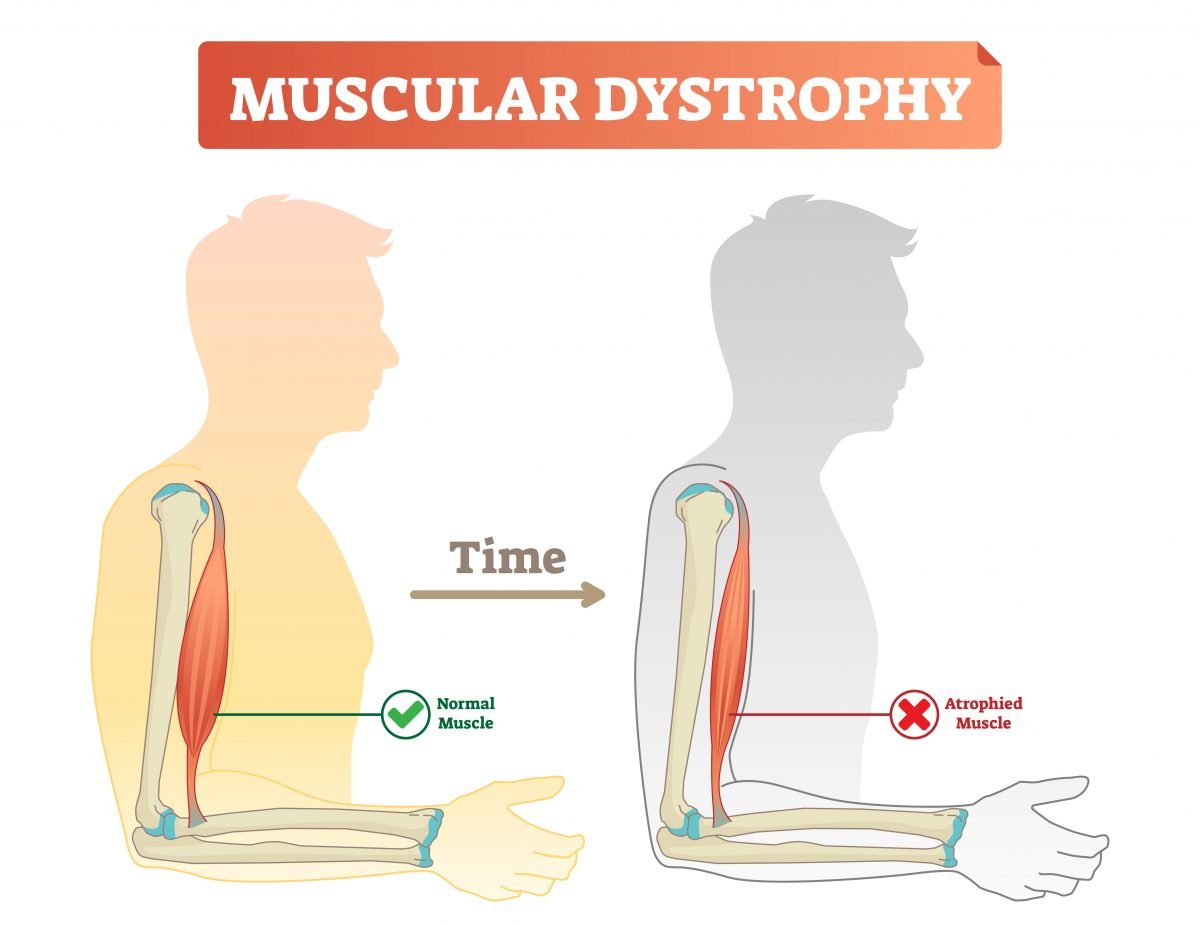
OVERVIEW OF DUCHENNE MUSCULAR ATROPHY
SYMPTOM
Signs of Duchenne muscular dystrophy can be observed as early as infancy (under 6 years of age). Muscles in the legs are often one of the first sites affected, so a child may begin to walk much later than other children his age. However, when children are able to walk, they may fall frequently and have difficulty climbing stairs or getting up. After a few years, the child has a waddling or toe-walking gait. Over time, mobility declines, loses the ability to walk on her own before the age of 12, and has an average life expectancy of only about 25 years due to myocardial damage and respiratory disorders.
Complications that Duchenne muscular dystrophy can cause include:
- Heart and lung damage
- Scoliosis
- Leg muscles are short and strong, called contractures
- Headache
- Problems with learning and memory
- Shortness of breath
- Asleep
- Difficulty concentrating
THE CAUSE TO THE ILLNESS
This is a recessive genetic disease. The Dystrophin gene is located on the short arm of the X chromosome. Therefore, most cases are male. The disease gene persists for many generations in the family, the mother is the carrier and passes it on to her son with a 50% incidence rate, with the daughter will usually not get the disease but can only carry the gene causing the inherited disease. from mother. Dystrophin gene is about 2400kb long (the longest gene in humans), including 79 exons responsible for Dystrophin protein synthesis. This protein has the function of protecting muscle cells, keeping the muscle fiber membrane strong and undamaged. The mutations that can occur on the Dystrophin gene are deletion mutations, point mutations, translocations, small deletions, and deletions are the most common mutations.
DIAGNOSTIC MEASURES
To diagnose Duchenne muscular dystrophy, it is necessary to combine clinical tests, especially genetic tests, to minimize inheritance of defects to the next generation. Some of these tests are of high value such as:
- Test of muscle enzymes - Serum Creatine Kinase: if there are symptoms of disease, this index will increase from 20 to 100 times higher than the normal value.
- Electromyography: showing signs of muscle fiber root injury
- Muscle biopsies: the results of muscle biopsies for patients with Duchenne muscular dystrophy are degenerated, atrophied muscle cells and abnormal proliferation of connective tissues around muscle fibers.
- Immunofluorescence test: no presence of Dystrophin protein on muscle cell membranes.
- Molecular genetic testing using MLPA technique – multiplexing, transducer amplification: detecting mutations in the gene that regulates Dystrophin protein synthesis to diagnose whether a person carries the gene causing Duchenne muscular dystrophy or not.

OBJECT
The disease occurs in both sexes, although it occurs mainly in men. Therefore, testing on all people of reproductive age is absolutely necessary, especially for women and the following subjects:
- People with a family history of muscular dystrophy or disease related to motor impairment.
- Pre-marital screening
- Prenatal diagnosis
- People with clinical manifestations of weak muscle tone, suspected disease
TREATMENT MEASURES
There is currently no cure for duchenne muscular dystrophy, but there are medications and other treatments that can relieve a child's symptoms, help protect muscles, and keep the heart and lungs healthy. This greatly prolongs the life of the patient.
However, severe impacts on patients' lives are inevitable, so genetic testing is the optimal method to help early diagnosis, early treatment and avoid passing on the disease to the next generations.
Please fill in the information below to receive our supports and consultations!







